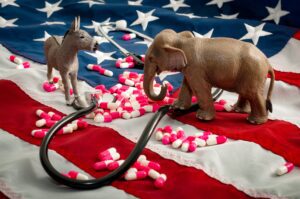Do Rewards Programs Really Help Employee Retention?

Many companies have implemented rewards programs to retain employees and keep them engaged, motivated, and committed. The idea is that employees will be more satisfied with their job if they are rewarded for their hard work and dedication.
Since more than 60 percent of employees in the United States cited money, pride in doing a good job, and how their employers treat them as top engagement drivers, rewards programs seem to make sense. However, a sizable proportion from each generation – Baby Boomers (40 percent), Generation X (27 percent), Millennials (40 percent), and Generation Z (44 percent) – reported that
they were planning to leave their current job within six months.
So, where is the disconnect? Are rewards programs truly a meaningful way to help retain employees, or is there something else at play?
Disconnect Between Employees and Employers
Recognition and rewards can build loyalty, but employees have to feel as if they are genuinely being rewarded. Not as if the effort is just an afterthought. For many companies, it seems that’s what’s happening.
According to global research by Gallup and Workhuman, 81 percent of leaders do not make recognition a strategic priority, 73 percent do not offer training in employee recognition, and nearly 66 percent lack a budget explicitly earmarked for recognition.
Automation and Personalization
To be effective, rewards programs have to be personalized, regardless of the level of automation involved. Automated and homegrown solutions can both work, but they aren’t enough on their own.
Outsourced SAAS (software-as-a-service) solutions make managing a program at scale easier. However, the trade-off is that less money is available for rewarding employees. Furthermore, only those employees who actively use the tool are rewarded.
These limitations can be resolved by instituting an internally managed program that ensures more of the budget is allocated to rewarding employees. And more oversight in the form of a committee can ensure that rewards are given out fairly.
So, while automation can streamline rewards programs, organizations must ensure they remain personalized and meaningful. Gallup findings indicate that the most successful recognition is commensurate with employees’ expectations and needs (23 percent strongly agree), authentic (one-third strongly agree), equitable (one-quarter strongly agree), embedded in the culture (19 percent strongly agree), and personalized (10 percent strongly agree).
An automated tool might not be able to deliver the personalization and authenticity employees want, but that doesn’t mean a homegrown solution is necessarily better. The key is to balance the needs of the organization’s employees and those of the company.
Taking a More Human Approach
Some personalization is essential to an effective rewards program. Removing the emotion and personal touch from the rewards process can result in transactional and often ineffective programs. They might seem like a fun game, but they don’t compare to the feeling of receiving genuine appreciation for a job well done.
An SAAS solution makes program management more effortless, while the other adds a personal touch. However, both require effective administration, an engaging organizational environment, and an understanding of what employees value.
Companies must understand their employees’ wants, needs, desires, and dislikes to develop an effective reward program. Ultimately, the solution they opt for will depend on the resources available, the size of their organization, and the employee base.
For example, a SAAS-powered option might be the best option for a large organization with a distributed workforce. On the other hand, a smaller company with a tight-knit team may be able to make a more personal one-on-one approach work.
The point is that rewards programs can drive employee loyalty, but they won’t be effective if they are too automated and lack personalization. Organizations must find the right balance between automation and personalization.
Reward programs are only one element of an overall approach to employee engagement and loyalty. For example, if employees are constantly overworked, aren’t provided with well-being support, or feel disconnected from their job and colleagues, no amount of rewards and recognition will make a difference.
For more Employee Benefits tips, contact INSURICA today.
Copyright © 2023 Smarts Publishing




